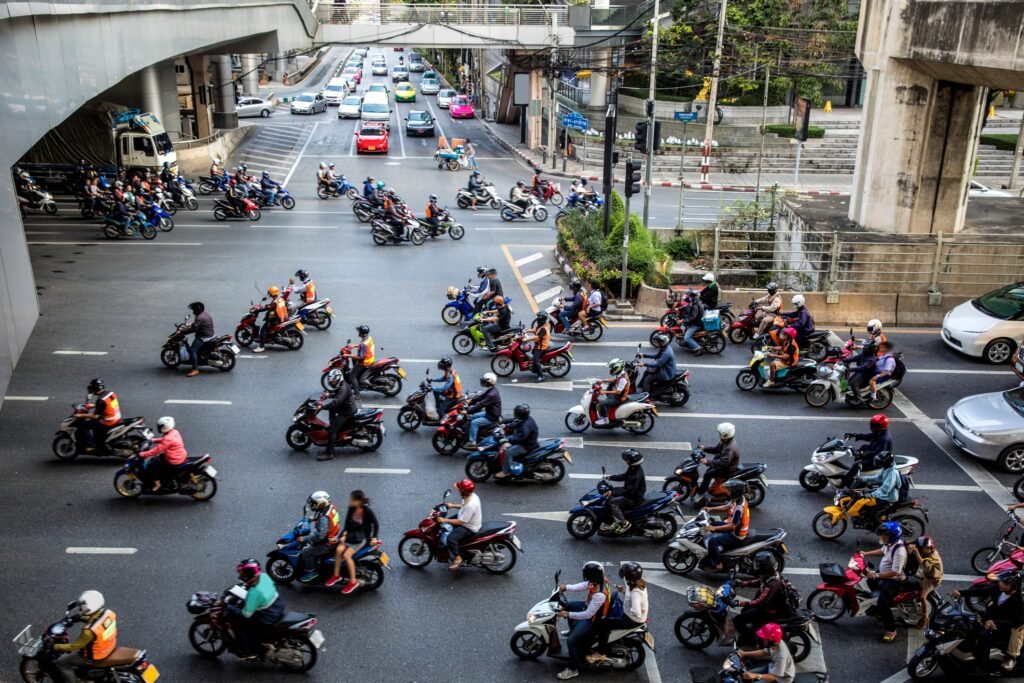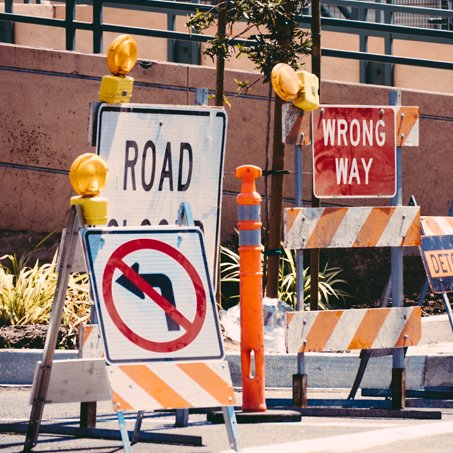How Can Road Safety be Improved in India?
Road safety is a critical issue in India, as the country has one of the highest rates of road accidents and fatalities in the world. According to the World Health Organization (WHO), an estimated 1.35 million people die each year in road accidents globally, with India accounting for over 150,000 of these deaths. The problem of road safety in India is multi-faceted and requires a comprehensive approach to address the various factors that contribute to road accidents. In this article, we will discuss five ways to improve road safety in India that can be taken to improve road safety in India.

Better Road Design and Infrastructure
One of the main reasons for road accidents in India is poor road design and inadequate infrastructure. This includes poorly maintained roads, missing or inadequate road signs, and poorly designed intersections that create dangerous situations for drivers and pedestrians. Improving road design and infrastructure is crucial to reducing the number of road accidents. This can be achieved by constructing divided highways, separate lanes for slow-moving vehicles, and well-designed intersections to reduce the risk of accidents. The government should also prioritize the maintenance of existing roads and invest in road safety infrastructure, such as traffic lights and road signs.
Improved Vehicle Safety Standards
Another major factor contributing to road accidents in India is the poor quality of vehicles on the road. Many vehicles in India do not meet minimum safety standards, which puts drivers, passengers, and other road users at risk. The government should enforce stricter regulations on the manufacturing of vehicles to ensure that they meet minimum safety standards, such as airbags, seat belts, and anti-lock brakes. This will help to reduce the number of fatalities in the event of a road accident
Improved Driver Education and Licensing
Driver education and licensing are crucial to reducing road accidents in India. The quality of driver education and licensing in India needs to be improved, with a focus on importance of road safety, traffic rules, and defensive driving techniques. Drivers should also be required to pass regular tests to renew their licenses and to ensure that they are up-to-date with the latest road safety practices.
Stricter Enforcement of Traffic Laws
Traffic laws are essential to ensuring the safety of drivers, passengers, and other road users. However, traffic laws in India are often poorly enforced, which contributes to the high rate of road accidents. Stricter enforcement of traffic laws is necessary to reduce the number of road accidents. This can be achieved by imposing heavy fines for traffic violations, such as over-speeding and drunk driving. The government should also invest in technology, such as automated speed cameras, to enforce traffic laws more effectively
Increased use of Technology
Technology can play a crucial role in improving road safety in India. The government can leverage technology, such as advanced traffic management systems and in-vehicle safety systems, to improve road safety. For example, advanced traffic management systems can help to reduce congestion and improve traffic flow, while in-vehicle safety systems, such as lane departure warnings and collision avoidance systems, can help to reduce the risk of road accidents.

Road Safety Campaigns and Public Awareness
Regular public awareness campaigns are crucial to educating people about road traffic safety and the importance of following traffic rules. These campaigns should focus on the dangers of distracted and drunk driving, and the importance of wearing seat belts and helmets. The government should also partner with road safety organizations to develop and implement these campaigns, and reach as many people as possible.

Here are Some Statistics Related to Road Safety in India:
- High rate of road accidents: According to the Ministry of Road Transport and Highways, there were over 4.5 lakh road accidents in India in 2019, resulting in 1.51 lakh deaths and 4.24 lakh injuries.
- High rate of pedestrian fatalities: In India, pedestrians account for a significant proportion of road traffic fatalities, with the World Health Organization (WHO) estimating that they represent over 20% of all road traffic deaths in the country.
- Over-speeding: Over-speeding is a major contributor to road accidents in India. The Ministry of Road Transport and Highways estimates that it was a factor in over 40% of road accidents in 2019.
- Drunk driving: Drunk driving is another major contributor to road accidents in India. The Ministry of Road Transport and Highways estimates that it was a factor in over 10% of road accidents in 2019.
- Lack of helmet use: The use of helmets is mandatory for two-wheeler riders in India, but a significant proportion of riders do not wear helmets, putting themselves and others at risk. According to the Ministry of Road Transport and Highways, lack of helmet use was a factor in over 50% of two-wheeler fatalities in 2019.
- Poor road design and infrastructure: Poor road design and inadequate infrastructure also contribute to road accidents in India. The Ministry of Road Transport and Highways estimates that poor road design was a factor in over 10% of road accidents in 2019.
These statistics highlight the need for a comprehensive approach to improving road safety in India and underscore the importance of the steps outlined in the previous response. The government, vehicle manufacturers, road safety organizations, and the general public must work together on road safety improvement strategies to reduce the number of road accidents and fatalities in India.
Conclusion
Road Safety is a critical issue in India, with the country experiencing a high rate of road accidents and fatalities. Improving road safety in India requires a comprehensive approach that addresses various factors that contribute to road accidents, such as poor road design and infrastructure, inadequate vehicle safety standards, poor driver education and licensing lack of enforcement of traffic laws, and a lack of public awareness about safety in road. The government, vehicle manufacturers, road safety organizations, and the general public must work together to reduce the number of road accidents and fatalities in India. The measures outlined in this article, including improved road design and infrastructure, stricter enforcement of traffic laws, increased use of technology, regular road safety campaigns and public awareness, and a data-driven approach, can help to make Indian roads safer for all users. By working together, we can make a meaningful difference and reduce the toll of road accidents in India.
FAQ: Road Safety Improvement Strategies
1. What are the key strategies for improving road safety?
Answer: Key strategies for improving road safety include:
- Strengthening Traffic Law Enforcement: Enforcing traffic laws rigorously to deter violations such as speeding and drunk driving.
- Enhancing Road Infrastructure: Upgrading road conditions, improving signage, and ensuring proper lighting and design.
- Launching Public Awareness Campaigns: Educating the public about safe driving practices and the dangers of traffic violations.
- Promoting Advanced Vehicle Safety Technologies: Encouraging the use of vehicles with modern safety features like ABS and collision avoidance systems.
- Improving Driver Training and Licensing: Providing comprehensive driver education and rigorous testing to ensure competent drivers.
2. How does strengthening traffic law enforcement improve road safety?
Answer: Strengthening traffic law enforcement helps reduce road accidents by deterring unsafe driving behaviors. Implementing stricter penalties and using technologies like speed cameras can enhance compliance with traffic laws, leading to safer driving conditions and fewer accidents.
3. Why is upgrading road infrastructure important for road safety?
Answer: Upgrading road infrastructure improves safety by addressing factors such as road conditions, design flaws, and inadequate signage. Well-maintained roads, clear markings, and proper lighting help prevent accidents and ensure safer travel for all road users.
4. What role do public awareness campaigns play in improving road safety?
Answer: Public awareness campaigns educate drivers, pedestrians, and cyclists about safe road practices and the risks of dangerous behaviors. By increasing awareness and promoting safe habits, these campaigns can lead to a reduction in accidents and fatalities.
5. How can advanced vehicle safety technologies contribute to road safety?
Answer: Advanced vehicle safety technologies, such as anti-lock braking systems (ABS) and collision avoidance systems, enhance vehicle control and help prevent accidents. These technologies assist drivers in maintaining safety by providing additional protection and reducing the likelihood of collisions.
6. Why is driver training and licensing important for road safety?
Answer: Comprehensive driver training and rigorous licensing ensure that drivers possess the necessary skills and knowledge to operate vehicles safely. Proper training helps drivers understand traffic laws, develop defensive driving techniques, and recognize potential hazards, which contributes to overall road safety.








